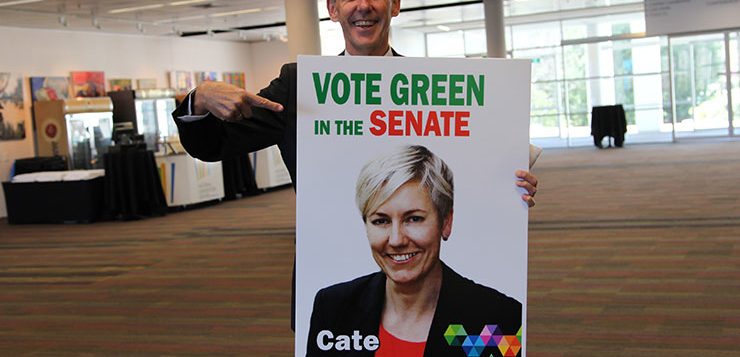In the final of a special three part series, Michael Brull* reviews an internal Greens NSW battle that spilled into the public, and ultimately into a court room. You can read parts 1 and 2 here, and here.
As discussed in part two of this series, former Greens representative Cate Faehrmann is a controversial figure within the Greens NSW. The left of the party has serious concerns about her, dating back many years.
Though others can be found on the public record, I think there are two issues where the public record gives some sense of some of the grievances held by some against Faehrmann. These relate to the temporary suspension of Senator Lee Rhiannon from the party room last year, and the debates around boycotts, divestments and sanctions against Israel in 2011.
I will conclude the series with discussion of a more recent proposal to oust Rhiannon, leaked to Fairfax.
The suspension of Lee Rhiannon, and the media campaign against her
Last year, every federal representative except Adam Bandt of the Greens voted to suspend Senator Rhiannon from the Federal Party Room. The suspension was until NSW representatives were no longer “bound to vote against the decision of the Australian Greens Party Room”.
In NSW, representatives have no autonomy or leeway to vote according to personal preferences. They get marching orders from the membership, which in theory they have no choice but to obey. Rhiannon accepted this binding, which proved frustrating for the rest of the federal political representatives. They wanted her to sometimes have some give, due to the need to reach consensus.
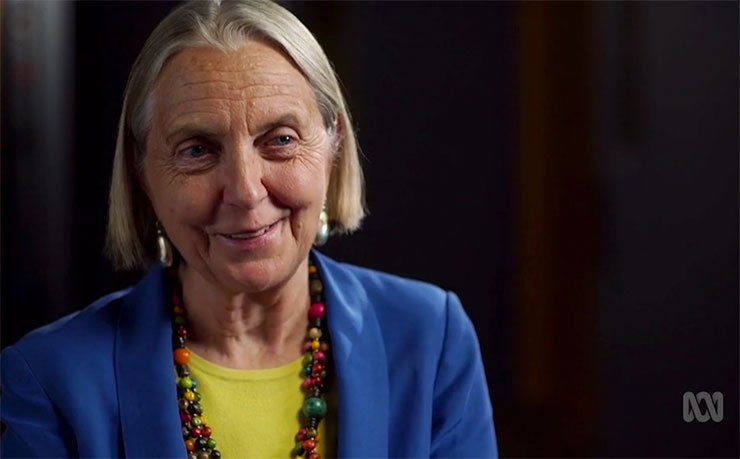
For those in NSW who were determined to maintain grassroots control over politicians, the attack on Rhiannon seemed like an attack on them.
The controversy left a sour taste for many in the Greens NSW. Yet there was another aspect, which also infuriated many. The ABC reported that Rhiannon had “already been censured twice for breaking party rules”. This claim, if it was correct, could only have come from sources with high-level access to meetings by the elected representatives. It seemed to indicate media backgrounding for the purpose of sullying Rhiannon’s reputation, and to justify the attempt shortly afterwards to indefinitely suspend her.
Senator Rhiannon denied that she had been censured. Many in NSW, inside and outside the party, were outraged.
The next day, ABC reported on how this claim had fared: “Party sources brushed off Senator Rhiannon’s argument she had been targeted by fabrications. They conceded there had not been a formal ‘censure motion’ against Senator Rhiannon, because that mechanism was not used in party room meetings.” So, it was indeed unnamed party sources who had spread the allegations against Rhiannon. And the allegation was false.
Someone issued dishonest backgrounding against Rhiannon, shortly before she was suspended indefinitely. In the end, the suspension was lifted. But for supporters of Rhiannon, and the binding of representatives, anger remained at this dishonest media attack.
No-one confessed to it, and no-one was held accountable. However, in an interview with ABC radio, Fran Kelly told Richard Di Natale that his office had been responsible for these allegations. This assertion by Kelly was later quietly removed, and identified as a mistake.
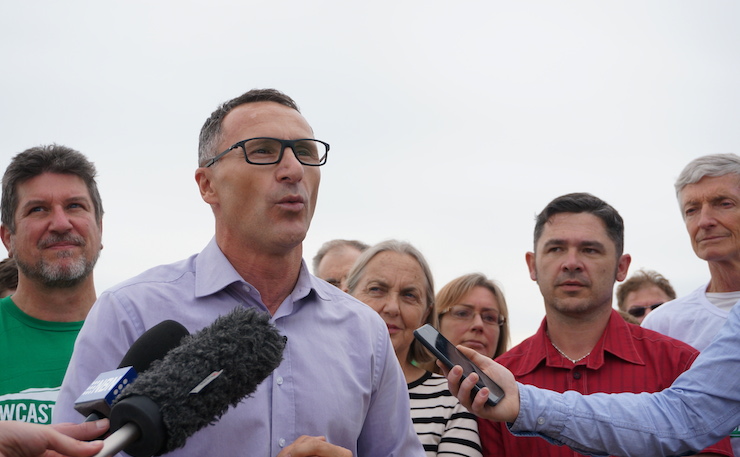
Many Greens activists, publicly and privately at the time, believed Kelly. They suspected that Di Natale’s office had been responsible for the dishonest media attacks on Rhiannon. This implicated Faehrmann, then serving as the chief of staff of Di Natale. Ultimately, it was never resolved or proven who had been responsible for peddling the false claim that Rhiannon had been censured twice.
It is possible that Faehrmann was innocent entirely of this charge. But it caused, or perhaps exacerbated, bad blood at an acrimonious time. Certainly, there was no effort on the part of her or others in the office to mend relations with those in the NSW Greens who were upset.
Already, in the current pre-selection race, further media backgrounding has ensued. Someone admittedly from Faehrmann’s camp told the Australian that Abigail Boyd, “a mother of two who lives on the NSW central coast and describes herself as a ‘specialist in global financial regulation’, was really ‘a banker pretending to be a Bolshevik’ in a bid to siphon off hard-left pre-selection votes.”
It also seems likely that someone from the right of the party leaked confidential information to Fairfax about a proposal to oust Senator Rhiannon so that Mehreen Faruqi can transition into her Federal Senate spot before the next election. I judge that the leak came from the camp, clustered around figures such as Faehrmann and Jeremy Buckingham, because of how it characterised the left of the party: the “radical left faction, known as Left Renewal or the eastern bloc.”
So far as I know, Left Renewal doesn’t exist, and the left doesn’t identify as the eastern bloc (given that leftists in the party don’t just live in the east). This language is used as a kind of epithet by opponents of the left in the Greens NSW.
An earlier conflict: Faehrmann and BDS in 2011
In late 2010, the Greens NSW embraced BDS against Israel as official policy. To make my position at the time clear, I regarded this as brave but wrong. When the smear campaign started up, I said it was predictable, and spoke against it. But ultimately, I thought this was not a well-judged fight, and thought they should reconsider, and instead adopt more targeted boycotts.
The Greens in NSW came under considerable pressure and media attack. They were slandered as anti-Semites and compared to Nazis. The attacks were relentless. In September 2011, the state upper house debated a motion on BDS. The motion was as follows:
“That this House:
(a) notes with concern the anti-Israel Boycott, Divestment and Sanctions (BDS) Campaign against legitimate businesses operating in Australia which provide jobs to hundreds of Australians;
(b) calls on all members to condemn the targeting of Max Brenner Chocolate Cafes by anti-Israel protestors;
(c) notes that some of the rhetoric used by proponents of the BDS campaign has descended into anti-Semitism; and
(d) condemns anti-Semitism in all its forms.”
Point a, in a sense, gave the game away. Noting with concern that BDS targets “legitimate businesses” in effect expresses concern at BDS. Boycotting products produced by exploitative labour conditions in Bangladesh or China could target legitimate businesses. Normally, no-one would express concern at that kind of targeting, as it is normal for boycott campaigns to target legitimate businesses that employ people.
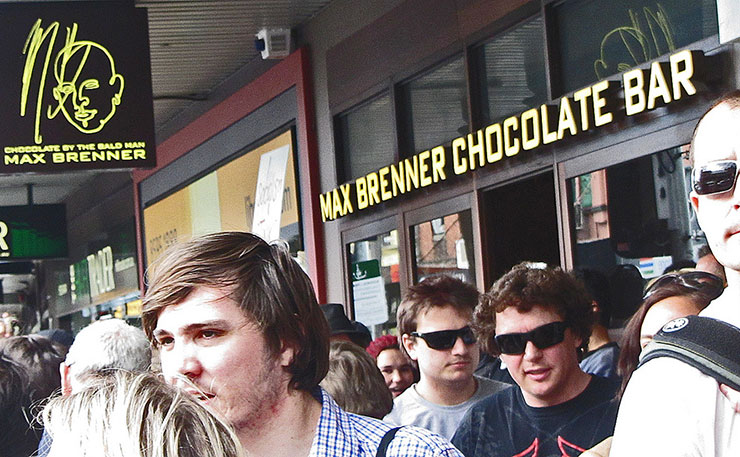
However, the effect of the motion – by noting BDS “with concern”, and then condemning anti-Semitism in all its forms – is really to insinuate that BDS is a form of anti-Semitism. It was a not very subtle attack on the Greens as anti-Semites.
Two Greens representatives gave strong speeches against the motion. They were David Shoebridge and John Kaye. Both noted that they strongly condemned anti-Semitism. But they also defended the right of people to protest in solidarity with Palestine, and spoke up about the oppression of the Palestinians.
At the time, these were rare voices on the subject, and they deserved considerable credit for what they said. Kaye also noted that, “Earlier this week Bob Brown, Christine Milne and the other Greens senators voted against the motions put forward by Senator Boswell and Senator Abetz” in the Federal Senate.
However, there were five Greens representatives in the state upper house at the time. Shoebridge and Kaye opposed the motion. Jeremy Buckingham didn’t speak. Two Greens representatives, Jan Barham, and Faehrmann, supported the motion. That is, they spoke in favour of, and voted for a motion expressing concern, if not outright condemning their own official policy that they were theoretically bound in principle to uphold.
In her speech on the motion, Faehrmann began by saying the Australian Greens “have a strong and principled position” on the Israel-Palestine conflict. After some more unconvincing throat-clearing, she came to discuss BDS:
“I agree that this tactic has been extremely controversial and its success in Australia has been brought into question. The Greens New South Wales are currently undertaking a review of BDS.
Paragraph (b) condemns the targeting of Max Brenner by protesters. While I do not agree with much of what other members have said in this debate, I share the concern of some members that the tone and public perception of these protests have been counterproductive and they are of concern to me. The Greens do not endorse the Max Brenner protests. The Greens are not involved in the organisation, promotion or otherwise of these events. I note that some members have tried to directly link The Greens with those protests. We are not officially involved and we do not endorse it.”
Note how the public perception of protests becomes a criticism of the protesters. She suggested that the motion express “concern” at the Max Brenner protests, rather than condemning them. This wouldn’t change the motion’s insinuation of a link between anti-Semitism and BDS.
Faehrmann went on: “I urge all members to support my amendments. I recognise that they may not succeed, and if they do not I have no choice but to support the motion as it stands.” In fact, she did have a choice. She could vote as Shoebridge and Kaye did, and as the Federal party leadership did. This should have been straightforward, given it was the policy she was theoretically bound to uphold. It is also noteworthy that the federal representatives did so without supporting BDS. Faehrmann defied party policy, voted to condemn BDS activists, and made a shallow pretence of supporting solidarity with Palestine.
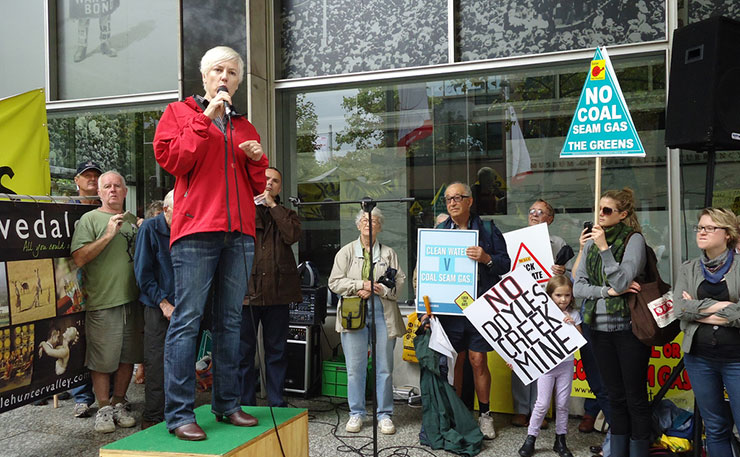
Faehrmann did not, before the speech, during or subsequently, make any substantive defence of Palestinian activists, or Palestinian rights. So far as I know, I have never seen her at an event in solidarity with Palestine. A veteran activist I know, who reliably attends just about every Palestine-related event in Sydney, takes a more derisory view of Faehrmann’s commitment.
As noted previously, Greens NSW representatives are theoretically bound to follow their marching orders from the members. Faehrmann, on this occasion, clearly did not regard herself as so bound.
To say that the Greens NSW are “currently undertaking a review of BDS” is to admit that the policy itself had not changed. That is, whilst Faehrmann’s speech may have expressed her personal views, it did not reflect the policies that had been decided upon. This, too, caused lasting conflict between herself and the left of the party. They regard representatives as duty bound to do what the membership wants.
This is why it is so striking that Faehrmann said that she had “no choice” but to support the motion. Under the rules that Greens representatives operate, she might have more appropriately regarded herself as having had “no choice” but to defend the official policy of the party.
In a sense, this is separate from the merits of Faehrmann’s position. Though supporters of Palestinian rights – even those who opposed BDS – would be dismayed at her refusal to defend activists from smears, that is separate from whether Greens representatives should be bound by party members to uphold their policies. This is a suspicion that remains. Members committed to grassroots binding are worried that if elected, Faehrmann may not regard herself as duty bound to follow orders from members.
The “moderates” try to oust Rhiannon, says Fairfax
Fairfax was leaked internal party room materials from internal sources from the Greens NSW. The leaks entirely benefited the party’s right, as the only person criticised in the story was Rhiannon. The latter was identified as leading a “radical faction”, as opposed to the “moderate” flank. The “radicals” were supposedly known as “Left Renewal” (which may not exist, and doesn’t encompass the entire left part of the party), or the “eastern bloc” (who are not just found in the east).
This language use, in my view, suggested a slapdash briefing on factional opponents. Certainly, I have never heard leftists in the party identify themselves in this way.
As a Greens NSW member, I am privy to the internal materials cited by Fairfax. As a writer, I decided to operate with a blindfold to those materials, and the channels through which they are accessed by members. Through different means, New Matilda was able to acquire relevant information on the proposal.
Fairfax’s Lisa Visentin reported that the proposal was titled “thanking Lee Rhiannon”, though it is recognised as “a campaign designed to force her from office”, and “an internal push to vacate her seat before the next election”. As mentioned previously, SDC proposals can only pass if they receive consensus, or a three quarters majority.
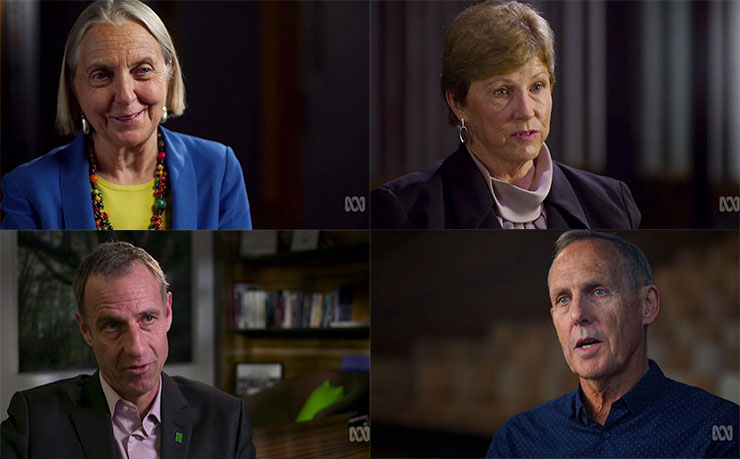
It is very difficult to imagine a proposal to oust Rhiannon getting that kind of overwhelming support. If a proposal is unlikely to be passed, one might speculate that the point lay elsewhere. Like, say, in the fact that the proposal was leaked to Fairfax, even before it could be discussed at the relevant conference. And the leak was apparently by someone who leaned against Rhiannon’s side of the political divide in the Greens (given the language used to describe the competing factions).
Visentin reported that the point of the proposal was for the “moderates” to oust Rhiannon. She reported innocently that “five branches” co-sponsored the proposal. Who are these moderates? New Matilda was able to confirm that one of the local groups that co-sponsored the motion was the Lower North Shore. This is the branch that has accepted Faehrmann as a member. That is, the attempt to oust Rhiannon, which was leaked to Fairfax, was co-sponsored by Faehrmann’s local group.
New Matilda is not accusing Faehrmann personally of being involved in the backgrounding in relation to the proposal. But it is significant that her group’s involvement in the anti-Rhiannon proposal was left out of the leaking and backgrounding provided to Fairfax. And that the leaking and backgrounding served the interests of her political faction. For those who have suspected Faehrmann of using the corporate media to fight her factional opponents on the left in NSW, this seemed another demonstration of the validity of their concerns.
Conclusion
For people who do not belong to the party, the leak may seem relatively unimportant. Most people are not particularly interested when leaks come from Labor or Liberal governments, unless the substance is interesting. Yet the point is that this is how one faction can earn the distrust and suspicion of another.
The advantage created by that kind of leak isn’t significant within the Greens. If there is an advantage, it is by gaining respectability through endearing the purported “moderates” to corporate media and political figures to the right of the party, who for various reasons have been harsh critics of Rhiannon.
Thus, when Faehrmann sought approval from the membership to stand for pre-selection for a casual vacancy, it was against a background of bad blood, suspicions, and considerable enmity which went back years. I cannot prove this was the determining factor, but it seems at least possible that her provisional status wasn’t treated on an exceptional basis due to the suspicion and enmity with which at least some in the party regarded her. Thus, Faehrmann was only able to get her way through taking the party to court.
Faehrmann hailed her legal win as a victory for the grassroots. It might equally be regarded as a victory over the grassroots. Her critics do not constitute the whole party. Yet it seems that Faehrmann, or at least her faction, have shown little interest in repairing bad relations with the left of the party.
When the election comes, whoever the successful candidates are will need the enthusiasm and energy of unpaid members volunteering time and energy to support their campaigns. It is a bad sign that there is already such division, and that it sharpened before the campaign began.
There is little sign of goodwill. Given her advantages, Faehrmann is presumably in a strong position to win the pre-selection. If she wins, she will have a seat in state parliament without needing to fight a general election. However, she may find that though a court victory may seem definitive, it is a victory at considerable cost.
Faehrmann, and the party, may well have been better off if she had devoted her efforts to building bridges with her factional opponents, rather than simply beating them. The people who didn’t want her to stand for pre-selection may not be willing to fight for her to get elected.
If the Greens NSW have a poor showing in the next state election, one can already predict what party sources will tell the corporate media. As this series has tried to show, that media orthodoxy has left some significant gaps in public understanding.
* Michael Brull is a member of the NSW Greens, as declared in part 1 of this article.
Donate To New Matilda
New Matilda is a small, independent media outlet. We survive through reader contributions, and never losing a lawsuit. If you got something from this article, giving something back helps us to continue speaking truth to power. Every little bit counts.

